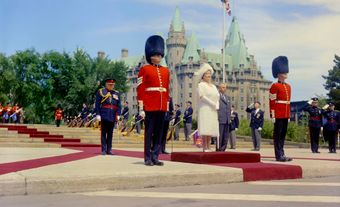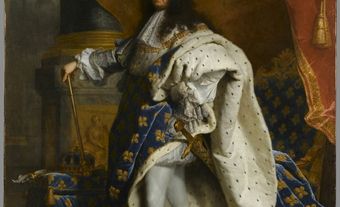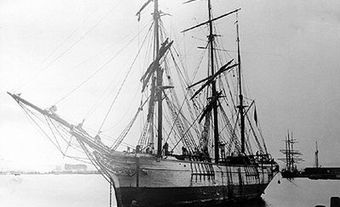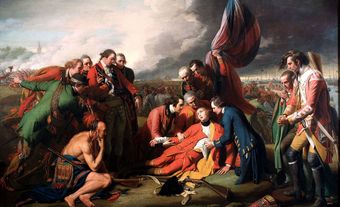Anne, Queen of England, Scotland and Ireland from 1702 to 1707, Queen of Great Britain and Ireland from 1707 to 1714 (born 6 February 1665; died 1 August 1714 in London, United Kingdom). Anne’s reign was dominated by the War of the Spanish Succession (Queen Anne’s War), which resulted in France ceding the Hudson Bay watershed, Acadia (New Brunswick and Nova Scotia) and Newfoundland to Great Britain under the Treaty of Utrecht. In 1710, Anne received Indigenous leaders known as the Four Kings of Canada, setting precedents for the modern relationship between Indigenous peoples and the Crown. The death of Anne’s last surviving child, William, resulted in the passage of the 1701 of Act of Settlement, which determines the royal line of succession in the United Kingdom, Canada and the other 13 Commonwealth realms to the present day.

Early Life and Education
Anne was born at St. James’ Palace, the fourth child of King Charles II’s younger brother James, Duke of York, the future King James II (1633–1701), and Anne Hyde (1637–71). Anne and her elder sister, the future Queen Mary II (1662–94), were the only two of the Duke and Duchess of York’s eight children to survive to adulthood. As Supreme Governor of the Church of England, Charles II insisted that his two nieces be raised as Protestants, although their parents were Roman Catholics.
Both Mary and Anne were directly in line to the throne because Charles II did not have any legitimate children. Yet they received little education beyond literacy, basic arithmetic, religion, embroidery, music and dancing. Anne spoke fluent French, since she spent her early childhood with relatives in France while receiving treatment for an eye condition.
Following the death of Anne’s mother in 1673, her father married a 14-year-old Roman Catholic Italian princess, Mary Beatrice of Modena. As a devout Protestant who described Catholic doctrine as “wicked and dangerous,” Anne had a strained relationship with her father and stepmother.
Marriage and Children
In 1683, Anne married Prince George of Denmark, the younger son of King Frederik III of Denmark. George and Anne lived in London in a suite of rooms near Whitehall Palace. Anne had 17 pregnancies, most of which ended in miscarriages or stillbirths. Her daughters Mary (born 1685) and Anne Sophia (born 1686) died of smallpox within a week of one another in February 1687. Anne’s only child to survive infancy was Prince William, Duke of Gloucester (1689–1700), who suffered from hydrocephalus. William’s death in 1700 prompted the English parliament to pass the 1701 Act of Settlement, which settled the succession after Anne on her father’s cousin, Sophia of Hanover, and Sophia’s Protestant descendants.

Sarah Churchill and Abigail Masham
Anne was very close to the ladies of her household, describing them as her “family.” Sarah Jennings became a maid of honour in 1673, later marrying John Churchill in 1677 or 1678. Anne wrote to Sarah in 1692, “I had rather live in a cottage with you than reign Empress of all the world without you.” After Anne became Queen in 1702, she appointed Sarah to the prestigious positions of Mistress of the Robes, Groom of the Stool and Keeper of the Privy Purse.
The relationship between the two women soured, however, because of their political differences and Sarah’s defiance of Anne’s authority. In 1711, Anne replaced Sarah as Keeper of the Privy Purse with her cousin Abigail Masham. Sarah wrote an angry letter to Anne, accusing her of “having discovered so great a passion for such a woman” and of “having no inclination for any but of one’s own sex.” The turbulent relationship between Queen Anne and Sarah Churchill inspired the 2018 film, The Favourite.
The Glorious Revolution
In 1685, Anne’s uncle Charles II died, and her father succeeded to the English throne as King James II and the Scottish throne as King James VII. James was unpopular with Protestants because of his Catholicism and arbitrary rule. The 1677 marriage of Anne’s elder sister Mary to the Protestant Dutch Prince William of Orange appeared to ensure a Protestant succession. In 1688, however, the birth of a son to James’s second wife Mary of Modena changed the line of succession, since younger brothers took precedence over their elder sisters at that time. Anne left London at the time of the birth and helped spread rumours that the baby was not the Queen’s child.
In 1688, William of Orange invaded England at the invitation of leading English nobles. James fled to Ireland, where William eventually defeated his father-in-law at the Battle of the Boyne in 1690. William and Mary accepted the Bill of Rights, promising to govern on the advice of Parliament, and were crowned jointly as King William III and Queen Mary II at Westminster Abbey in 1689. Anne supported the overthrow of her father, writing to William just before his invasion of England to wish him “your good success in this so just an undertaking.” Anne’s relationship with William and Mary during their reigns, however, was often strained because she did not feel she received the respect and income she deserved.
Accession to the Throne
Anne succeeded to the thrones of England, Scotland and Ireland on the death of her brother-in-law William III in 1702. Although she had lost all her children by the time of her accession, she presented herself as a mother to her people. Anne was an early constitutional monarch whose powers were constrained by the Bill of Rights, but she exercised significant political influence throughout her reign. As party politics developed in the early 18th century, she favoured first the Whig party and then the Tory Party. Anne was the last monarch to refuse royal assent to a piece of legislation passed by Parliament, rejecting the Scottish militia bill of 1708. She feared an armed Scottish militia would support a French invasion intended to place her Catholic half-brother on the throne.
The 1710 Statute of Anne was the first piece of government legislation that provided authors with the copyright to their works instead of publishers. The statute granted authors a copyright term of 14 years with a provision for renewal. The Statute of Anne was supported by prominent authors during Anne’s reign, including Jonathan Swift and Daniel Defoe.

The Act of Union
Since 1603, England and Scotland had shared a monarch. In 1707, they became a single political entity with the passage of the Act of Union. Anne was therefore the last Queen of England and Scotland and the first British monarch. The Act of Union was precipitated by concerns that Scotland would not accept the Hanoverian succession and instead support Anne’s Catholic half-brother. The Act of Union remains controversial in Scotland to the present day.
Queen Anne’s War
In foreign policy, Anne’s reign was dominated by the War of the Spanish Succession (1702–13), known as Queen Anne’s War in North America. Anne and her government opposed King Louis XIV of France’s efforts to place his grandson Philippe, Duke d’Anjou, on the Spanish throne. The British army, led by John Churchill, 1st Duke of Marlborough, enjoyed a series of victories in Europe, including the 1704 Battle of Blenheim, the 1706 Battle of Ramillies and the 1708 Battle of Oudenaarde. Anne presided over victory celebrations at St. Paul’s Cathedral in London.
Anne expressed her support for the conquest of French Canada in 1708. The British captured Port Royal, the capital of French Acadia, in 1710. That same year, Anne received four Indigenous leaders at St. James’s Palace. They became known as The Four Kings of Canada. They requested Anne support them in their war with the French and Wendat (Huron), stating, “Great queen … we have been as a strong wall for [the English settlers’] security even to the lives of our best men.” Anne presented them with many gifts, including communion silver for Her Majesty’s Royal Chapel of the Mohawks. On 25 March 1711, the Queen announced an expedition to Canada, and in April a British fleet set sail for New England with the intention of coordinating with troops there to seize Quebec. This expedition was ultimately unsuccessful, since seven British warships were lost at sea. Quebec would not fall to the British until 1759. (See The Conquest of New France.)
The Treaty of Utrecht that ended Queen Anne’s War in 1713 shaped the development of modern Canada. Philippe became King Felipe V of Spain, but France ceded significant overseas territories to Britain, including the Hudson Bay watershed, Newfoundland and Acadia (New Brunswick and Nova Scotia except for Cape Breton Island).
Death
Anne’s husband, George of Denmark, died of dropsy in 1708. Anne mourned his passing, writing to King Frederik IV of Denmark that “the loss of such a husband, who loved me so dearly and so devotedly, is too crushing for me to be able to bear it as I ought.” Anne’s health declined in her widowhood. On 30 June 1714, the anniversary of her son William’s death, Anne suffered a stroke and died two days later. Sophia of Hanover had predeceased Anne by seven weeks. Anne was therefore succeeded by her second cousin, Sophia’s eldest son King George I, who became the first British monarch from the House of Hanover.
Reputation
Until the late 20th century, Queen Anne was rarely credited with the achievements of her reign and was instead remembered for her obesity, female favourites and 17 pregnancies. The scathing critique of Anne’s intellect in Sarah Churchill’s memoirs influenced generations of historians to underestimate Anne’s abilities. Anne’s reputation improved with the publication of Edward Gregg’s scholarly biography, Queen Anne, in 1980. Subsequent biographies have analyzed previously underexplored aspects of her reign, including her political influence and cultural patronage.
Legacy in Canada
When the British captured Port Royal in 1710, they renamed the town Annapolis Royal in honour of Queen Anne. The Annapolis Valley, Annapolis River and Annapolis County in Nova Scotia are all named in her honour. Le Fort du Port Royal was renamed Fort Anne.

 Share on Facebook
Share on Facebook Share on X
Share on X Share by Email
Share by Email Share on Google Classroom
Share on Google Classroom









